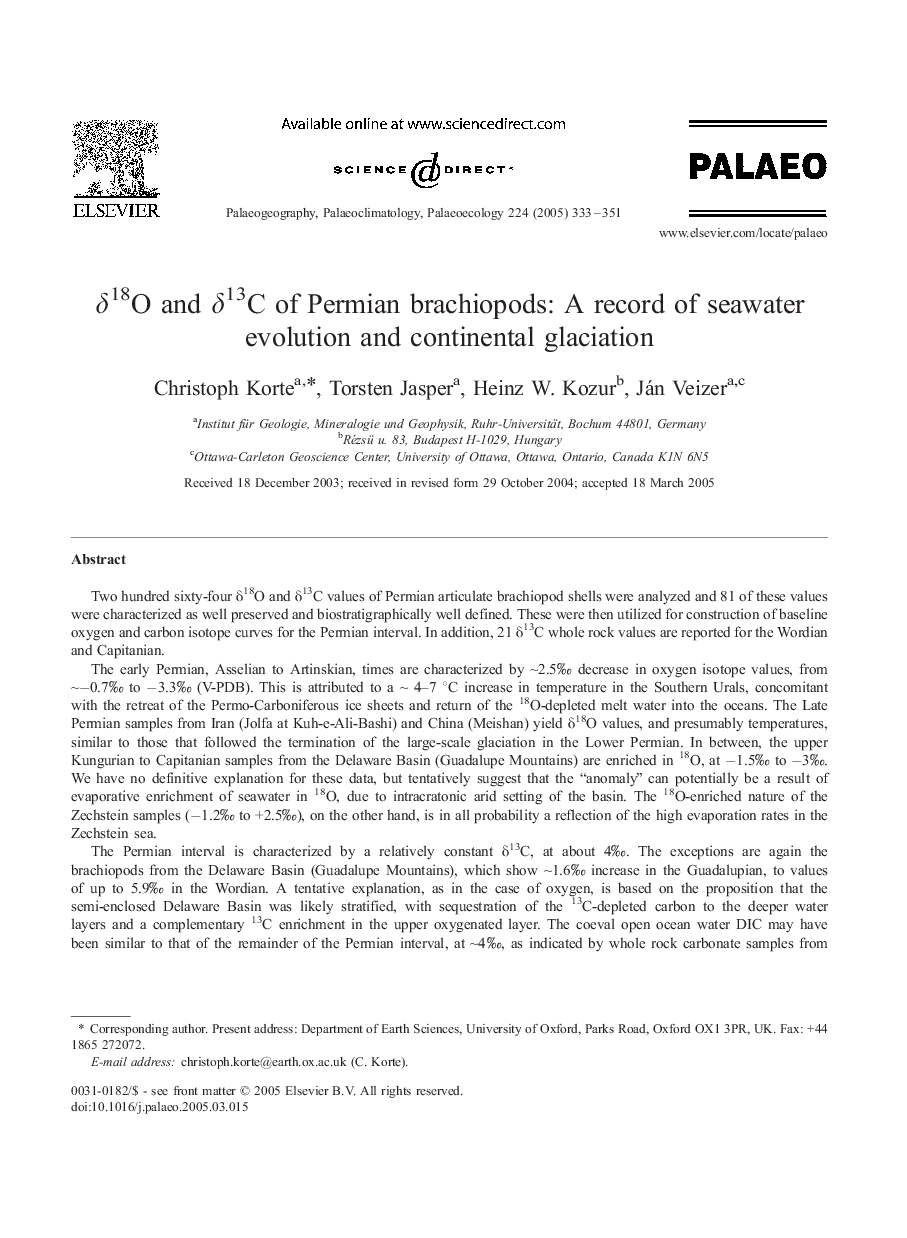| Article ID | Journal | Published Year | Pages | File Type |
|---|---|---|---|---|
| 9463004 | Palaeogeography, Palaeoclimatology, Palaeoecology | 2005 | 19 Pages |
Abstract
The Permian interval is characterized by a relatively constant δ13C, at about 4â°. The exceptions are again the brachiopods from the Delaware Basin (Guadalupe Mountains), which show â¼Â 1.6â° increase in the Guadalupian, to values of up to 5.9â° in the Wordian. A tentative explanation, as in the case of oxygen, is based on the proposition that the semi-enclosed Delaware Basin was likely stratified, with sequestration of the 13C-depleted carbon to the deeper water layers and a complementary 13C enrichment in the upper oxygenated layer. The coeval open ocean water DIC may have been similar to that of the remainder of the Permian interval, at â¼Â 4â°, as indicated by whole rock carbonate samples from Oman, Sicily, and Iran. In the latest Permian, the trend mimics the well-known δ13C drop at the Permian/Triassic boundary.
Related Topics
Physical Sciences and Engineering
Earth and Planetary Sciences
Earth-Surface Processes
Authors
Christoph Korte, Torsten Jasper, Heinz W. Kozur, Ján Veizer,
